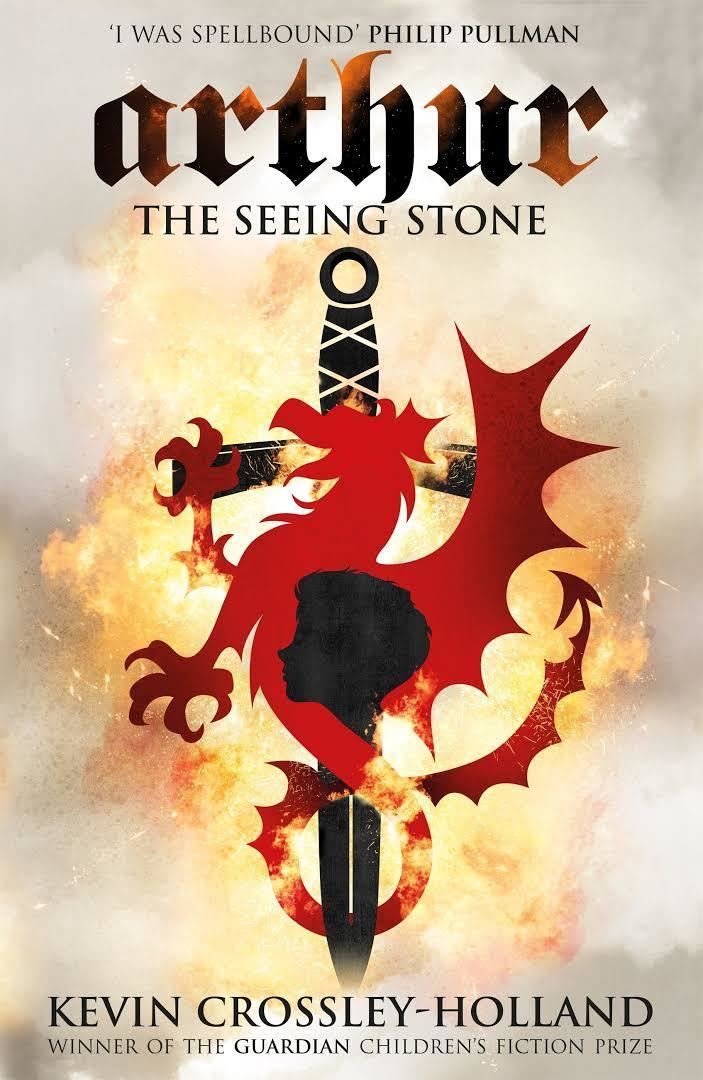8.4 /10 1 Votes8.4
4.7/5 Barnes & Noble Country United Kingdom Publication date August 2000 Originally published August 2000 Followed by At the crossing-places | 3.6/5 Goodreads Cover artist Marc Adams Series Arthur trilogy Pages 324 pp (first edition) | |||||||||||||||||||||||||||||||||
 | ||||||||||||||||||||||||||||||||||
Media type Print (hardback & paperback), audiobook (tape and CD) Genres Fiction, Fantasy, Historical novel, Historical fantasy, Children's literature, Speculative fiction Similar Kevin Crossley-Holland books, King Arthur books, Fantasy books | ||||||||||||||||||||||||||||||||||
Book review the seeing stone kevin crossley holland
The Seeing Stone, or Arthur: The Seeing Stone, is a historical novel for children or young adults, written by Kevin Crossley-Holland and published by Orion in 2000, the first book of the so-called Arthur trilogy (2000 to 2003). Set primarily in the March of Wales during A.D. 1199 and 1200, it features a young boy named Arthur de Caldicot who observes a secondary story in the "Seeing Stone", the early life of legendary King Arthur. Crossley-Holland and The Seeing Stone won the annual Guardian Prize and Tir na n-Og Award.
Contents
- Book review the seeing stone kevin crossley holland
- The seeing stone
- Plot in the Real World
- Plot in the Seeing Stone
- Awards
- Series
- References
The trilogy is a contemporary retelling of Arthurian legend, told by Arthur de Caldicot as a first-person narrative, where both the primary and secondary settings contribute to the retelling.
The seeing stone
Plot in the Real World
The story begins in the year 1199, just before the beginning of the Fourth Crusade. Young Arthur de Caldicot, thirteen years of age at the time, is the second son of a knight living in Caldicot manor in the "Middle Marches" of the March of Wales. Most of the first book deals with the stresses associated with medieval life. Most important to Arthur is the fact that he is Sir John's second son, and thus ineligible to inherit land. To have a life of his own, he must become a squire and then a knight, and create his own manor and farmland. One challenge to overcome is his inadequate "yard-skills", especially jousting and swordplay. He is left-handed, considered a dangerous oddity in those days, but he must joust and fence with his off-hand. Another challenge is that his father would make him a scribe for his skill reading and writing. The obstacles disappear when he learns on his fourteenth birthday that his "uncle" Sir William de Gortanore is really his father; he becomes heir to a large manor. Unfortunately, it seems that his mother's husband was murdered by Sir William, who was jealous of him. And the revelation terminates the betrothal of Arthur and Grace, Sir William's daughter; as Grace is Arthur's half-sister they cannot marry. The novel ends with Arthur accepted as squire to the Lord of the Middle Marches, Stephen de Holt.
Plot in the Seeing Stone
The wizard Merlin gives Arthur de Caldicot the "Seeing Stone" early in the story, along with the warning it will cease to work if anyone else shares in its knowledge. Through the stone Arthur observes the life of legendary King Arthur until his rise to power as King of Britain. It begins with the marriage of King Uther and Ygerna. They conceive a child, who is named Arthur and is taken by Merlin to a foster family. Years later, when King Uther dies, Arthur comes to be king. Many specific people look similar to or exactly like people in Arthur's life. The most notable resemblance is between Arthur and young King Arthur himself, which leads de Caldicot to suppose that Arthur in the stone is himself in the near future. This belief is only accentuated when he learns on his birthday that his parents are only foster parents, as for young King Arthur. Eventually it becomes clear that King Arthur inhabits a parallel universe, with events in both worlds reflecting each other.
Awards
Crossley-Holland won the annual Guardian Children's Fiction Prize, a once-in-a-lifetime book award judged by a panel of British children's writers, recognising the best children's book by an author who has not yet won it. Exceptionally the 2001 Prize covered new publications during 21 months 2000–2001 as the schedule was re-aligned with the preceding school year rather than calendar year.
The Welsh Tir na n-Og Award recognised The Seeing Stone as the year's best English-language book for young people with "authentic Welsh background".
The Seeing Stone was bronze runner up for the Smarties Prize in ages category 9–11 years and it made the 2000 Whitbread Awards children's book shortlist.
Series
The Arthur trilogy comprises The Seeing Stone and two sequels, summing about 1100 pages in their first editions (hardcover).
In the UK, the first book was published in print and audio tape editions. A paperback edition followed in June 2001, and an audio CD in July 2003. There was another paperback edition in September 2006 with new cover art (see image).
Scholastic published the first US edition in 2001 under its imprint Arthur A. Levine Books. There were Danish, Finnish, German, Spanish, and Norwegian-language translations that year; Catalan, French, and Italian in 2002; Hebrew 2004, Serbian 2006, Romanian 2008.
